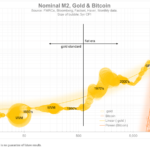
- Understand crypto trading risks: Recognising common risks such as market volatility, regulatory changes, and security vulnerabilities is crucial for protecting investments.
- Diversify your portfolio: Spread investments across multiple cryptocurrencies, sectors, and asset classes like stocks or real estate to reduce exposure to losses.
- Use hedging strategies: Leverage tools like futures, options, and stablecoins to minimise the impact of market swings and protect your capital.
- Implement risk management tools: Set stop-loss and take-profit orders, and use risk assessment software to make data-driven decisions and maintain control.
- Stay informed about the market: Follow reliable news sources and monitor global economic developments to anticipate changes and optimise strategies.
- Continuously evaluate and adapt strategies: Regularly review performance metrics and adjust trading approaches to align with evolving market conditions.
When I first ventured into crypto trading, I was drawn by its potential for high returns, but I quickly realised the importance of managing risks. The volatility that makes crypto exciting can also lead to significant losses if you’re not prepared. That’s when I discovered the value of hedging strategies, and they’ve been a game-changer for me ever since.
Hedging isn’t about eliminating risks entirely; it’s about creating a safety net to protect your investments during market swings. It’s given me more confidence to trade, knowing I’ve got measures in place to minimise potential losses. Whether you’re new to crypto or have been trading for years, understanding how to hedge effectively can make all the difference in achieving long-term success.
Understand the basics of crypto trading risks
Understanding crypto trading risks made a huge difference in how I approach trades. Becoming aware of potential pitfalls helped me control losses and make informed decisions.
Recognise common risks involved
Identifying common crypto trading risks is essential for protecting investments. Market volatility, like sudden price surges or drops, can trigger panic buying or selling. Exchange hacks, such as the Mt. Gox breach, may result in asset loss. Regulatory changes could also reduce access to certain platforms. Fraudulent schemes, including fake ICOs or phishing attempts, target unsuspecting traders. Even personal mistakes, like mismanaging private keys, often lead to avoidable losses. According to seasoned analysts, creating a risk checklist minimises exposure and develops a more strategic mindset.
Learn how market volatility impacts trades
Market volatility shapes how trades perform and affects profitability. For instance, Bitcoin prices have seen daily swings exceeding 10%, often leading to impulsive decisions. High volatility means increased risk, but it also provides opportunities for calculated gains. Influences include global events, economic shifts, or major announcements, which may trigger unpredictable market reactions. As experts like Andreas Antonopoulos suggest, using stop-loss orders and allocated budgets limits losses during drastic fluctuations. Earning steady returns becomes more possible through cautious planning and a balanced risk-reward evaluation.
Diversify your crypto portfolio
I’ve learned that diversification is one of the smartest ways to manage risks in crypto trading. By spreading my investments across various options, I’ve found better balance and reduced the impact of any single loss. Here’s how I diversify effectively within the crypto market.
Invest in multiple cryptocurrencies
Investing in several cryptocurrencies spreads risk. Rather than relying on one coin, I divide my investments among options like Bitcoin, Ethereum, and Solana. This approach helps me benefit from their separate price movements. According to experts at CoinDesk, it reduces vulnerability to a single coin’s extreme volatility.
Holding coins from different sectors brings more stability. For example, I’ve balanced my portfolio with cryptos tied to gaming, finance, and dapps. Diversified portfolios stand stronger during unpredictable market swings, as highlighted by Blockchain Council reports.
Allocate funds across different asset classes
Combining crypto with other asset classes enhances risk management. I allocate funds to assets like stocks, ETFs, and gold alongside cryptocurrencies. This method shields me during crypto downturns. Fidelity research shows mixed asset portfolios are less impacted by market dips.
Property investments also work well for me. Pairing crypto trading with real estate creates a buffer for potential crypto losses. Experts, including financial planners at NerdWallet, recommend allocation adjustments based on market conditions to optimise returns.
Use hedging strategies to minimise losses
Hedging strategies have been a game-changer in my crypto trading journey. They’ve provided a way to manage the inherent risks of this volatile market effectively.
Employ futures and options contracts
Futures and options contracts allow me to hedge against price swings. For instance, I use a short hedge to protect gains during potential downturns. Futures contracts are agreements to sell an asset at a future date at a set price, shielding me from unexpected price drops.
Options contracts, on the other hand, give me the right, but not the obligation, to buy or sell at a specific price. If the market moves unfavourably, these contracts act as my safety net. Traders often call them “insurance” against losses.
Expert sources like Investopedia suggest that combining futures and options creates a more flexible risk management toolkit. It’s a powerful approach that has helped me stabilise returns in unpredictable markets.
Consider stablecoins as a buffer
Stablecoins have been my go-to for maintaining balance in volatile conditions. Their value is pegged to stable assets like the US dollar, reducing exposure to wild price dips in crypto. Coins like USDT, USDC, and DAI have become essential components of my hedging plan.
I often move funds into stablecoins when trends look uncertain. This protects my portfolio without pulling out of the market entirely. Unlike fiat withdrawals, they allow quick re-entry into trades when the time is right.
According to a report by CoinDesk, stablecoins improve liquidity and safeguard capital during turbulent periods. This aligns with my own experience of less stress and greater confidence in handling unexpected price fluctuations.
Implement risk management tools
Effective risk management tools are non-negotiable in crypto trading. They provide the structure and control necessary to navigate volatile markets and protect capital. Here’s how I’ve used these strategies to enhance my trading.
Set stop-loss and take-profit orders
Using stop-loss and take-profit orders has transformed my trades. A stop-loss automatically closes a position once a set loss threshold is reached, preventing further losses. For example, setting a stop-loss at 5% below my entry price has saved me from major drawdowns. Take-profit orders lock in gains by exiting positions when they hit target prices. I typically set these at levels identified through technical analysis, ensuring I secure profits without second-guessing. As Financial Times’ expert Chris Flood suggests, “Risk management orders add a disciplined exit strategy during unpredictable market shocks.”
Utilise risk assessment software
Risk assessment software streamlines trading with precise metrics. I use tools like CoinMarketCap and TradingView to gauge market volatility, track prices, and evaluate risk/reward ratios. These platforms help me set realistic goals and control exposure. I’ve avoided over-leveraging by sticking to metrics that calculate position size based on my capital. On-chain analysis features, available in tools like Glassnode, reveal trends and potential risks early. Crypto analyst Alex Krüger once said, “Proper analytics reduce emotion-based decision-making.” I’ve found that true, as relying on software makes my trading decisions sharper and more accurate.
Stay informed about market conditions
Staying informed about market conditions has transformed the way I approach crypto trading. It’s my go-to method for making informed decisions and reducing risks. By keeping up with market news and broader economic shifts, I’ve gained the confidence to optimise my trades effectively.
Follow trusted market news and trends
I make it a habit to follow reliable crypto news sources like CoinDesk and CryptoSlate. They provide updates on market trends, regulatory changes, and key industry developments. For instance, I recently relied on news about Ethereum’s network upgrades to prepare for potential price shifts.
Social media platforms, especially Twitter, are helpful when following insights from industry experts like Raoul Pal. I also use tools like TradingView for real-time market analyses. Staying updated through these resources allows me to anticipate movements, whether it’s Bitcoin halving or sudden surges in altcoins.
Monitor economic and political developments
Global events often influence crypto markets. For example, I tracked inflation updates from the Bank of England, which helped me predict Bitcoin’s price surge during currency instability. Monitoring economic policies directly impacts how I adjust my portfolio and hedge my positions.
Political policies such as anti-crypto announcements in certain countries also affect markets. I pay attention to global regulations through platforms like Reuters to stay prepared. This awareness gives me an edge, especially in managing trades during unpredictable policy changes or economic shifts.
Regularly evaluate and adjust strategies
Crypto trading requires constant improvement. I’ve learned that reviewing strategies often can make a massive difference. Staying sharp and adaptable has enhanced my trading results and safeguarded my portfolio.
Analyse performance metrics
Tracking performance metrics refines trading strategies quickly. I focus on the Sharpe Ratio, Win Rate, and Maximum Drawdown. For example, the Sharpe Ratio evaluates risk-adjusted returns, helping me balance risk and rewards. Regular monitoring ensures I stay on track.
Using metrics like Out-of-Sample Testing reveals strategy reliability. By testing strategies on unseen data, I eliminate flaws before real trades. It’s improved my confidence and profitability over time. These tools deliver a straightforward path to consistent earnings.
Adapt to changing market dynamics
Adapting strategies protects me against sudden shifts. Market conditions vary daily, so I adjust entry and exit rules as needed. During steep crashes, I’ve reduced exposure by tightening stop-loss orders. This prevents potential large losses while maintaining engagement.
Historical data offers insights into market trends. I’ve backtested strategies, tweaking indicators to optimise results. Experts agree that ongoing adjustments foster resilience. My adaptable mindset has allowed me to secure gains even during unpredictable volatility.
The importance of being effective for safer and smarter investments
Hedging crypto trading risks has been a game-changer for me, transforming how I navigate this volatile market. By integrating strategies like diversification, stop-loss orders, and futures contracts, I’ve built a more resilient approach that balances risk with opportunity. Staying informed and continually refining my methods has helped me stay ahead, even during unpredictable market conditions.
While no strategy guarantees success, a structured and adaptable mindset is essential for long-term growth. The lessons I’ve learned have not only safeguarded my portfolio but also boosted my confidence in making smarter trading decisions. With the right tools and strategies, managing risks becomes less daunting and more rewarding.
Featured image credit: fabio/Unsplash






